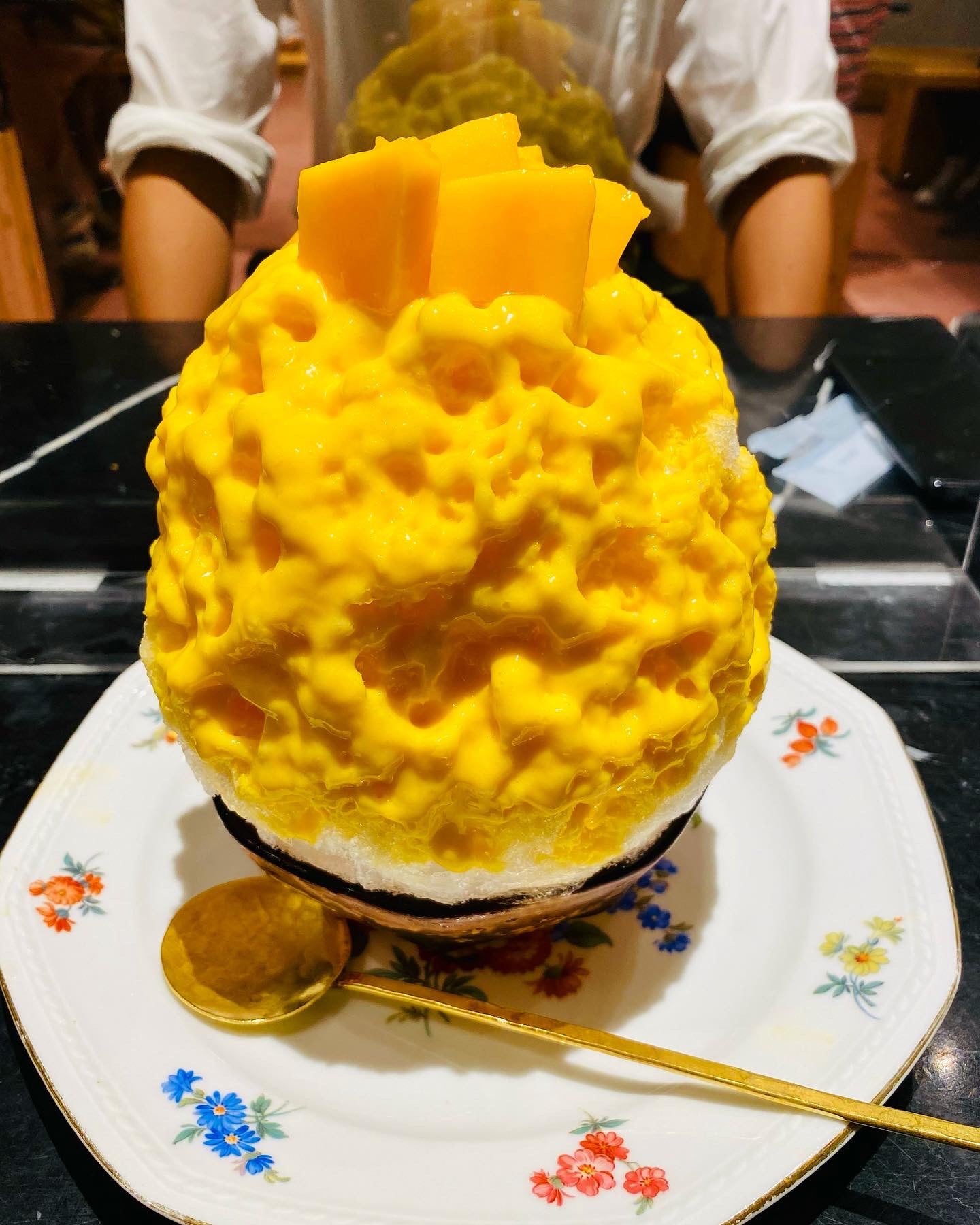

· By Chamoy City Limits
The Art of Japanese Shaved Ice
The art of Japanese shaved ice, known as "kakigori," has a long and rich history in Japanese culinary culture. Kakigori is a popular frozen dessert made by shaving blocks of ice into delicate, fluffy ice flakes and then topped with various sweet syrups and condiments. While kakigori is the most well-known form of Japanese shaved ice, there are other related frozen desserts as well. Let's explore the history and current information on these delightful treats. We've definitely been inspired by the look of these beautiful deserts, if you notice the raspas we made on the original Chamoy City Limits truck.
History of Japanese Shaved Ice: The origins of kakigori can be traced back to the Heian period (794-1185) in Japan. During this time, ice was brought down from mountains and stored in icehouses called "himuro" to be used as a luxury food item. In the Edo period (1603-1868), kakigori became more accessible to the general public. Blocks of ice were shaved using a hand-operated machine called "kakigori-ki" or manually with a knife. It was typically enjoyed by samurai and commoners alike during the summer months.
Over time, kakigori evolved to include various flavors and toppings. In the Meiji period (1868-1912), Western influences led to the introduction of sweet syrups made from fruits and condensed milk as popular toppings. In the Taisho period (1912-1926), kakigori stands became more widespread, and it became a staple summer dessert for people of all social classes.

Traditional Kakigori: Traditional kakigori is made by shaving a block of ice into fine, delicate flakes using a machine. The ice is then piled high in a bowl or cup and drizzled with colorful, flavored syrups. Popular syrup flavors include strawberry, melon, matcha (green tea), lemon, and blue Hawaii. Some traditional variations may also include toppings such as sweetened red beans, condensed milk, fresh fruits, mochi (rice cakes), or ice cream.
Modern Innovations: While the traditional form of kakigori is still widely enjoyed, modern innovations have expanded the range of flavors and presentation styles. Many shops now offer premium ingredients, unique syrups, and elaborate toppings to create visually stunning and indulgent shaved ice creations.
In recent years, there has been a rise in specialized kakigori shops that focus on high-quality ingredients and creative flavor combinations. These shops often use natural fruit juices, artisanal syrups, and even incorporate elements of molecular gastronomy to enhance the experience.
Other Frozen Desserts in Japan: Apart from kakigori, Japan has a variety of other frozen desserts that are popular and well-loved:
-
Yukimi Daifuku: This is a traditional Japanese dessert consisting of small mochi (rice cake) filled with ice cream. The mochi is soft and chewy, and the ice cream is often flavored with green tea or red bean.
-
Mochi Ice Cream: It is a modern adaptation of traditional mochi and ice cream. Mochi ice cream consists of small, round balls of ice cream wrapped in a thin layer of sweet mochi. The flavors range from classic vanilla and chocolate to more unique options like matcha, black sesame, and mango.
-
Ice Cream Creations: Japan is known for its innovative and whimsical ice cream creations. Ice cream parlors in Japan often offer extravagant sundaes and parfaits that feature various flavors of ice cream, fruits, sauces, cookies, and other toppings. These desserts are visually stunning and designed to be a feast for both the eyes and taste buds.
-
Soft Serve Ice Cream: Soft serve ice cream, known as "soft cream" in Japan, is incredibly popular. It is served in a cone or cup and comes in a wide range of flavors, including traditional options like vanilla and green tea, as well as unique flavors such as sakura (cherry blossom), sweet potato, and even wasabi.
These are just a few examples of the diverse range of frozen desserts available in Japan. The country's culinary creativity and attention to detail have made Japanese frozen treats highly regarded both domestically and internationally.

Current Trends and Popularity: Japanese shaved ice, along with other frozen desserts, continues to be a beloved summer treat in Japan. Kakigori is commonly found at festivals, food stalls, specialized shops, and even in some traditional Japanese restaurants. Its popularity has also spread to other parts of the world, with kakigori shops and cafes opening in various countries.
Social media has played a significant role in the recent surge of interest in Japanese shaved ice. Instagram-worthy photos of beautifully crafted kakigori and other frozen desserts have contributed to their popularity among food enthusiasts and travelers.
In conclusion, the art of Japanese shaved ice, particularly kakigori, has a long-standing history in Japan and continues to evolve with modern innovations. It remains a refreshing and delightful treat enjoyed by people of all ages during the summer months. Combined with other frozen desserts like yukimi daifuku, mochi ice cream, and inventive ice cream creations, Japan offers a diverse and exciting frozen dessert culture.
